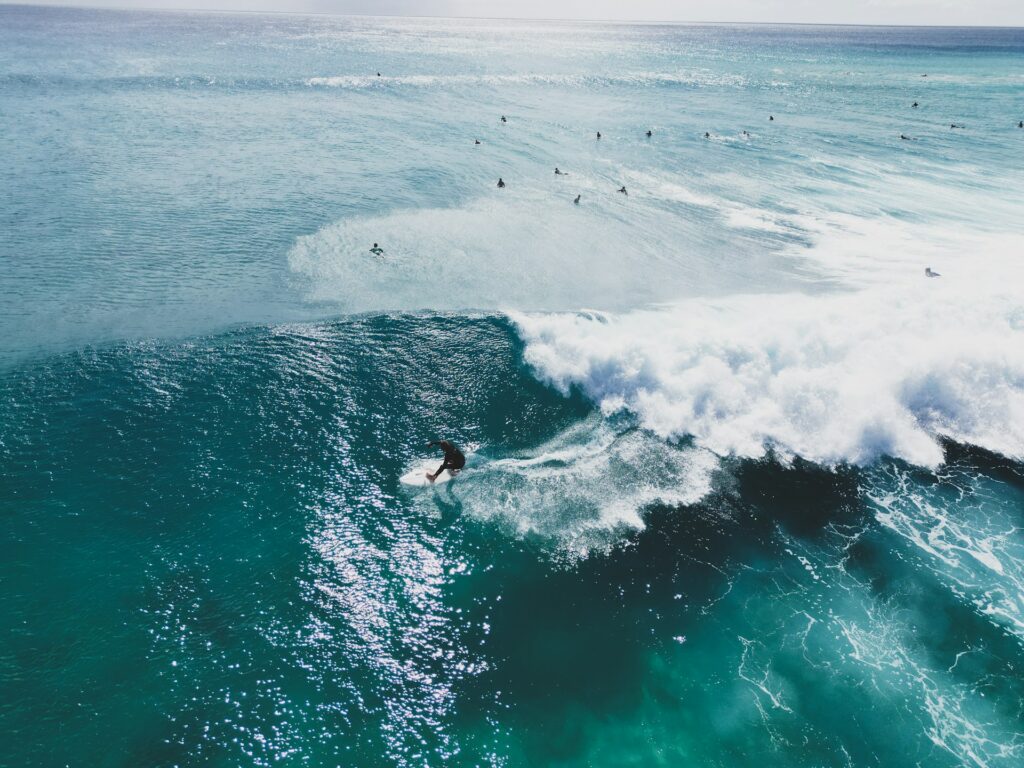Types Of Surfing Waves & Breaks
Quadri Abdur July 1st, 2024 Posted In: Articles Tags: Surfing
A surf break is a zone where waves break, or crash, creating a good spot for surfing. These breaks are often grouped according to what’s under the water, like sand, rocks, or reefs. Whether you’re a beginner or professional surfer, it’s important to know the different types of surfing waves and breaks as the knowledge can help you avoid rookie mistakes and improve your overall surfing experience.
What are the Different Types of Waves for Surfing?
Generally, there are four types of surfing waves. They include:
Beach Breaks
Beach breaks happen when waves hit the sandy bottom of a beach. These waves are great for beginners because they are usually softer and easier to ride. Imagine standing on a beach and watching the waves gently roll in and break on the sand. The sand makes it safer if you fall off your board because it’s soft and not sharp like rocks.
What’s more, beach breaks can change every day because the sand under the water moves around. This means the waves can be different every time you go to the beach. It makes surfing at beach breaks fun and exciting because you never know exactly what kind of waves you’ll get!
Point Breaks
Point breaks occur when waves hit a point of land, like a rocky headland, and peel along the coastline. This type of surf break is usually long and smooth, making it great for more experienced surfers who want a longer ride. When you see a point break, it looks like the wave is wrapping around the land in a long, continuous line.
Furthermore, point breaks are often found in beautiful places where the land meets the sea in interesting ways. Surfers love point breaks because they can ride the wave for a long time, practicing turns and tricks. It’s like having a long playground where the fun just keeps going!
Reef Breaks
Reef breaks happen when waves crash over a reef or rocky bottom. These waves can be powerful and are best for advanced surfers. The reef shapes the wave, making it perfect and smooth, but it can be dangerous because of the sharp rocks below. You need to be careful when surfing reef breaks to avoid getting hurt.
Interestingly, reef breaks create some of the most amazing waves you can see. Surfers travel from all over the world to surf these waves because they can be big, powerful, and perfect for showing off their skills. It’s like riding a wave sculpted by nature itself!
Rivermouth Waves
Rivermouth waves form where a river meets the ocean. These waves can be a mix of beach and point breaks, offering a unique surfing experience. The flow of the river water can change the shape of the waves, making each one different from the last.
In addition, rivermouth waves can be one of the most exciting types of waves for surfing because they are always changing. The combination of river and ocean water creates special wave shapes that surfers love to explore. Surfing at a river mouth is like being on a constantly changing adventure, with new waves forming all the time.

Why is Knowing the Types of Surf Breaks Important?
Understanding the different types of surfing waves and breaks is key to choosing the right spot to surf. If you’re a beginner, beach breaks are a great place to start because they are safer and easier. As you get better, you can try point breaks and reef breaks to challenge yourself and improve your skills.
Furthermore, knowing the types of waves also helps you understand how to use your surfing gear better. Different waves might require different surfboards or accessories, but you may not know the correct gear to use if you do not understand the different types of surf breaks. For example, you might need a shorter board for quick turns on a reef break or a longer surfboard for long rides at a point break.
Finally, knowing the types of surf breaks can make your surfing experience more enjoyable. When you know what kind of waves to expect, you can plan your sessions better and make the most of your time in the water. Whether you’re looking for a relaxing ride or an adrenaline-pumping challenge, understanding the different breaks helps you find the perfect wave for your mood and skill level.
Mastering the Waves: Surfing Different Types of Waves Safely and Skillfully
Surfing is a thrilling sport that offers a variety of waves to ride, each with its own unique characteristics. By learning about the different types of surfing waves you can choose the best spots to surf and improve your skills. Remember to always respect the ocean and be safe, no matter what type of wave you are surfing. Happy surfing!

